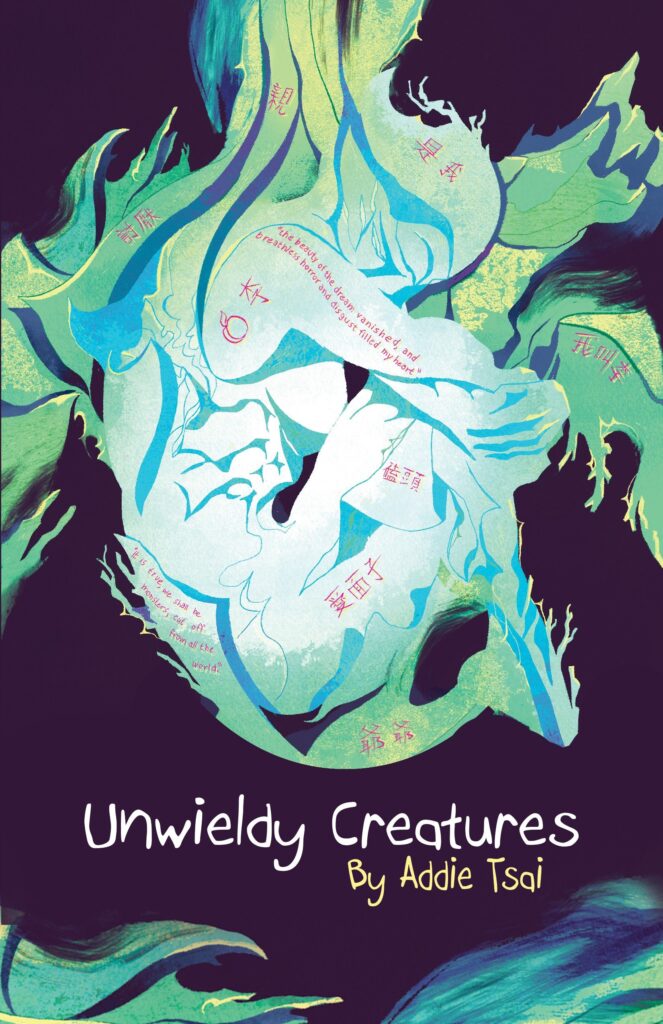
I’d have called this review “The Post-Modern Prometheus,” but The X-Files got there first.
There’s a strong case that Mary Shelley’s Frankenstein — not to be confused with the Kenneth Branagh-directed film Mary Shelley’s Frankenstein — is the most influential work of fiction published since 1800. There are huge swaths of science fiction narratives in which humanity creates a new form of life only to see it rebel; it’s not hard to place Frankenstein at the heart of that.
Focusing the criteria down a bit, it’s worth pointing out that the number of novels directly alluding to Shelley’s book are relatively sizable as well. Jeanette Winterson’s Frankissstein, Ahmed Saadawi’s Frankenstein in Baghdad, and Alasdair Gray’s Poor Things are only some of the books that use Shelley’s narrative as a starting point to either build on her chosen themes and images or critique them. (Or both!)
Addie Tsai’s Unwieldy Creatures stands out as a recent entry to the Frankenstein-inspired canon. There are two big things that make Unwieldy Creatures stand out. The first is that Tsai is riffing on some underrated elements of Mary Shelley’s original — including the fact that Frankenstein is structured as a series of nestled narratives. Tsai does something similar here: the first narrator we encounter is Plum, whose story gradually intersects with that of Dr. Frank eventually, a third voice enters the story as well, that of Ash. How these three narrators are connected to one another — and when their stories are taking place in relation to one another — are one of this novel’s most satisfying mysteries.
The second way in which Tsai’s novel stands out is the way in which Tsai uses the structure of Frankenstein — a brilliant, isolated scientist who creates a new form of life that becomes the scientist’s rival — to reckon with questions of race and gender that Shelley didn’t touch upon in her novel. Ash, the result of Dr. Frank’s innovations in IVF, is nonbinary; both Dr. Frank and Plum are queer and biracial. And while Ash’s relationship to Dr. Frank is troubled, that’s far from the only unsettling familial relationship on display in Unwieldy Creatures; Dr. Frank’s domineering father is at the root of many of the fractured relationships within the book.
The plot of Tsai’s novel illustrates the way that abuse can take cyclical forms and extend across generations. Dr. Frank’s own reaction to the newborn Ash is especially telling:
This was not a creature I wanted to claim. I did not want my name attached to any birth certificate for this bundle tucked under my arm. No social security number. No proper identification. This creature killed my love and was marked with the poison of my brother, my cousin, my darling Ezra who had become a stranger before my very eyes.
There’s a lot in this book that resonates emotionally — but it’s also a literary descendent of Frankenstein, and as such has plenty to say about alienation from society and the dangers of technology. Tsai’s novel is an engrossing blend of new and old, and a welcome spin on a classic narrative.
***
Unwieldy Creatures
by Addie Tsai
Jaded Ibis Press; 292 p.
Follow Vol. 1 Brooklyn on Twitter, Facebook, and sign up for our mailing list.
